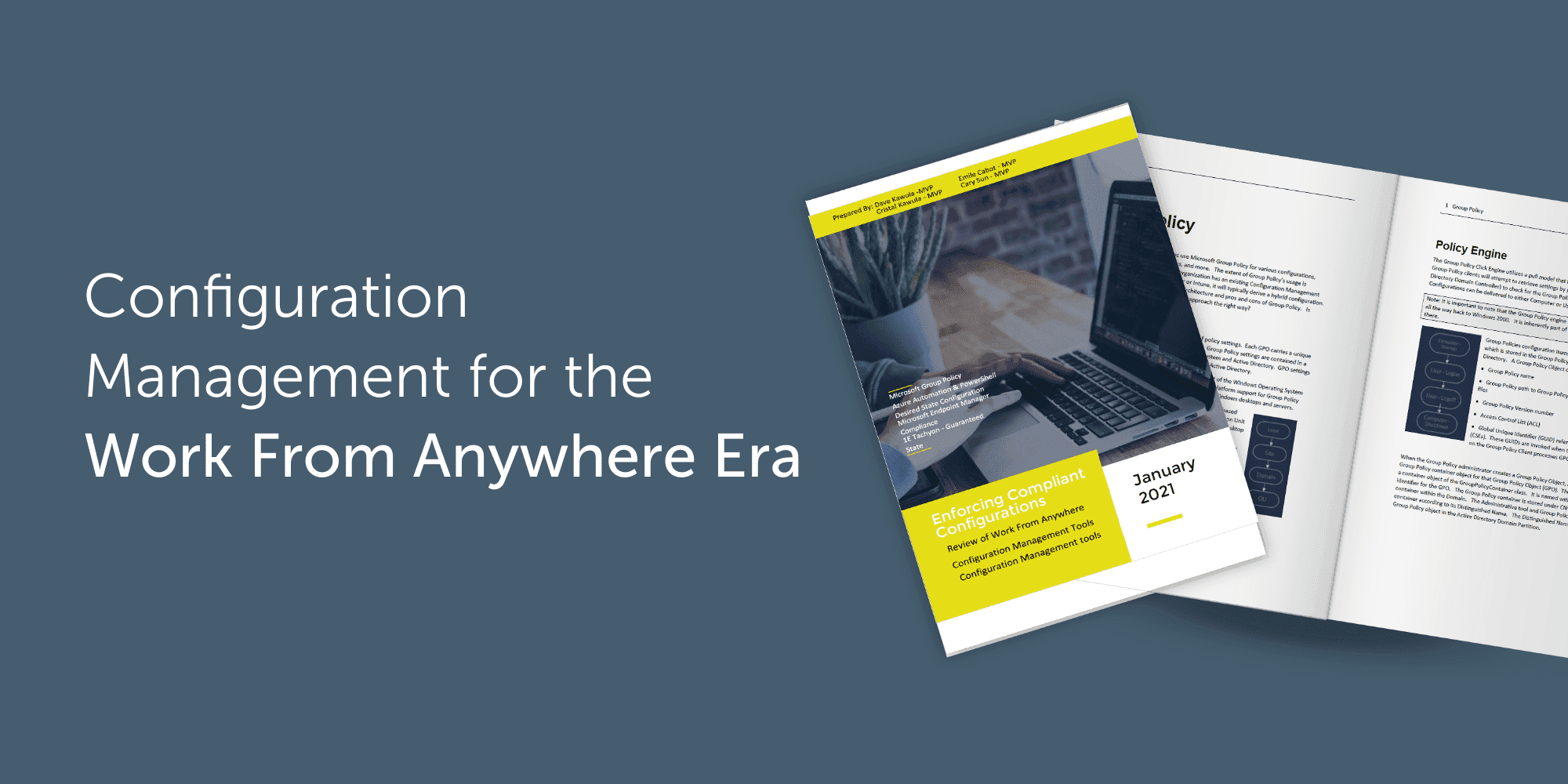Configuration management is a process for maintaining computer systems, servers, and software consistently, in a desired state. It’s a way to make sure that a system performs as it’s expected to, as changes are made over time. And whilst managing an estate of devices on the network has always been a challenge for Infrastructure Administrators, the last year has presented us with a new scope of challenges and considerations.
New challenges, same objectives
In today’s world, we’re now faced with real threats from bad actors, a multitude of ever-changing devices, and – thanks to the small matter of a global pandemic – a sharp spike in complex remote working scenarios. However, despite the varied challenges of remote working environments, it is important that organizations can easily reach, manage, configure, monitor, and remediate all endpoints – regardless of location and platform. But with more users than ever before no longer on the network firewall, accessing and utilizing endpoints from anywhere, configuration management in the work from anywhere era looks a little different to what we’re used to.
So, what does configuration management for the ‘Work From Anywhere’ era look like? And are traditional tools enough to manage and sustain a modern workforce?
Moving away from traditional technologies
In their recent feature comparison work, elite Microsoft MVPs Dave Kawula, Cristal Kawula, Emile Cabot, and Cary Sun consider the changing requirements of configuration management and compare traditional technologies Group Policy, PowerShell Desired State Configuration (DSC)/Azure Automation, and Endpoint Manager Compliance Settings, with the Tachyon Guaranteed State offering.
Their research found that, while traditional systems provide a very capable solution for managing your device environment, these pull-based, inventory-based products are inefficient when it comes to the remediation of device compliance in a time that vulnerabilities are exploited faster than they can be patched. The paper outlines that if we’re going to be responsible for endpoint compliance and security in a connected world, we need a fast and light product in the environment that fills a critical gap as systems management and security management become increasingly more intertwined.
In the work from anywhere era, successful configuration management needs to:
1. Support remote working
With everyone working from home it’s important that your system can scale beyond hundreds of devices to 50,000+ to reflect organizations adding mobile devices at a rapid pace. Similarly, its imperative to have an engine that can deliver instruction sets without impacting the existing network or core infrastructure and disrupting work.
2. Work in "User-time"
Response times and data accuracy are imperative in today’s world. Users expect real-time, consumer like responses to self-service demands like software installation, for example. Enable administrators to instantly reach out to all their connected devices and utilise current-state reporting to facilitate immediate resolution.
3. Be simple to administer
The lower the bar for usage from an admin perspective, the more cost effective it is to manage the tool. Not to mention, the less hardware required to support your system, the lower the TCO. Even better if there is a SaaS option, as it will eliminate any requirement to manage that complexity of infrastructure at all.
Are you keen to learn more about configuration in the work from anywhere era?
Read the full Microsoft MVP comparison document here.







